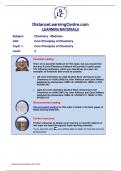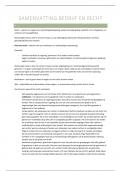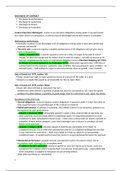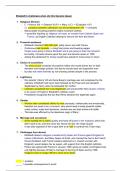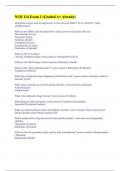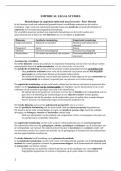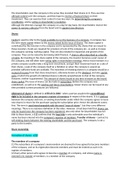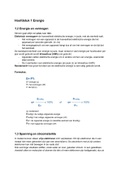LEARNING MATERIALS
Subject: Chemistry / Medicine
Unit: Core Principles of Chemistry
Topic 1: Core Principles of Chemistry
Level: 3
Essential reading:
There is no essential textbook for this topic, but you should find
that any A-Level Chemistry textbook will provide a useful guide.
The following textbooks, which you should buy as a pair, are
examples of textbooks that would be suitable:
• AS Level Chemistry for AQA Student Book (Advanced Level
Chemistry for AQA) (2000) by John Atkinson and Carol Hibbert,
published by Heinemann. ISBN-10: 0435581341. ISBN-13: 978-
0435581343
• AQA A2 Level Chemistry Student Book (Advanced Level
Chemistry for AQA) (2001) by John Atkinson and Carol Hibbert,
published by Heinemann. ISBN-10: 0435581317. ISBN-13: 978-
0435581312
Recommended reading:
Recommended reading for this topic is listed in the back pages of
these learning materials.
Further resources:
Further resources to deepen your learning on specific aspects of
this topic are listed throughout these learning materials.
If you see this icon you will be able to listen to how the word is
pronounced
DistanceLearningCentre.com, 2019
, Subject: Chemistry / Medicine
Unit: Core Principles of Chemistry
Topic 1: Core Principles of Chemistry
Level: 3
LEARNING MATERIALS
Read and make notes:
Making notes turns reading into studying. Notes should be brief, clear
and helpful.
To help your understanding:
• rewrite or summarise what you have learned (avoid copying
what you have read);
• note down any questions your studying has raised, either to
ask your tutor, or to develop into further research.
To help you to remember:
• sum things up to improve long term memory;
• write things down to aid motor memory;
• use colour, images or patterns to help visual memory.
To help you in your assessments:
• record where you will find information (e.g. page numbers);
• keep your notes organised and easy to navigate;
• highlight where further reading and research are needed,
including any recommended or further reading;
• use your notes to help you get started on your TAQs.
Read the Specification:
So that you will know the criteria you will be assessed on please
read the unit specification in my courses on the Materials page.
© DistanceLearningCentre.com, 2022 2
, Subject: Chemistry / Medicine
Unit: Core Principles of Chemistry
Topic 1: Core Principles of Chemistry
Level: 3
LEARNING MATERIALS
Contents
Press CTRL + Click in the contents list to go to the relevant page
Introduction ................................................................................................. 1
1. Redox .................................................................................................. 2
1.1 Reduction ........................................................................................... 2
1.2 Redox reactions ................................................................................. 3
1.3 Oxidation number .............................................................................. 5
1.4 Oxidation number and Redox Reactions ......................................... 8
2. Understanding Enthalpy .................................................................. 11
2.1 Exothermic and Endothermic reactions......................................... 11
2.2 Reaction Profile diagrams ............................................................... 12
2.3 Expressing Exothermic and Endothermic changes in numbers .. 14
2.4 Activation Energy ............................................................................ 16
2.5 Standard Conditions for Enthalpy Changes .................................. 17
2.5.1 The Standard Enthalpy Change of Reaction or ΔH°r ..................... 17
2.5.2 The Standard Enthalpy Change of Formation or ΔH°f ................... 18
2.5.3 The Standard Enthalpy Change of Combustion or ΔH°c ................ 19
2.5.4 Using Bond Enthalpies to Determine Enthalpy Change ................. 19
2.5.5 The Limitations of Using Average Bond Enthalpies ....................... 21
2.5.6 Applications of Enthalpy Changes ................................................. 22
2.6 Measurements of enthalpy changes using standard calorimetry ... 22
2.7 Investigating enthalpy change involving solutions ......................... 23
2.7.1 Calculating the enthalpy ................................................................ 24
2.8 Calculating Enthalpy change of combustion ................................. 28
2.9 Hess’s Law ....................................................................................... 32
2.9.1 Explaining Hess's Law .................................................................. 32
2.9.2 Working out an enthalpy change of formation from enthalpy
changes of combustion ................................................................. 33
2.9.3 Working out an enthalpy change of reaction from enthalpy changes
of formation ................................................................................... 36
2.9.4 Hess’s Law Calculations to Determine H for a reaction ............... 37
3. Rate of Reaction ............................................................................... 45
3.1 Reaction Rate ................................................................................... 45
3.2 Collision Theory............................................................................... 47
© DistanceLearningCentre.com, 2022 1
, Subject: Chemistry / Medicine
Unit: Core Principles of Chemistry
Topic 1: Core Principles of Chemistry
Level: 3
LEARNING MATERIALS
2.3 Activation Energy for a Reaction .................................................... 48
2.4 Maxwell-Boltzman Curves ............................................................... 48
2.5 Effect of Concentration on Reaction Rates ................................... 49
2.6 Effects of Surface Area on Reaction Rates .................................... 50
2.7 Pressure Effects on Rate of Reaction ............................................ 52
2.8 Effect of Temperature on Reaction Rate ........................................ 52
2.9 Effect of Catalysts on Reaction Rate .............................................. 54
3.8.1 Homogenous Catalysts ................................................................. 55
3.8.2 Heterogenous Catalysts ................................................................ 56
4. Equilibria ........................................................................................... 58
4.1 Le Chatelier’s Principle ................................................................... 58
4.2 The Haber Process .......................................................................... 60
5. Acids and bases ............................................................................... 63
5.1 Definition of acids, bases and alkalis ................................................ 63
5.1 Strong and weak acids .................................................................... 64
5.1.1 Strong acids .................................................................................. 64
5.1.2 Weak acids ........................................................................................ 65
5.2 pH scale ............................................................................................ 65
5.3 Acid-base indicators........................................................................ 66
5.4 Calculating pH.................................................................................. 67
5.4.1 Calculating the pH of acidic solutions ............................................ 68
5.4.2 Calculate the pH of alkaline solutions ............................................ 69
5.4.3 Neutralisation reactions between acids and (metals, alkalis or
carbonates) ................................................................................... 70
Appendices ............................................................................................... 74
Appendix 1 ................................................................................................ 74
Appendix 2 ................................................................................................ 75
Appendix 3 ................................................................................................ 76
Recommended reading ............................................................................ 77
Resources ................................................................................................. 77
Sources and credits.................................................................................. 77
Image credits .............................................................................................. 77
© DistanceLearningCentre.com, 2022 2

